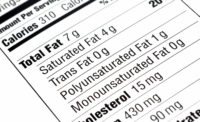What does your packaging say about you?
Here are some key attributes of sustainable packaging and what sets it apart from traditional packaging materials.

Packaging can tell a lot about a company. Consumers can hold the package; they touch it, they look at the colors, shapes and the size of the package. These are all visual clues that help paint a picture about an organization. Further, packaging has proven to be an effective marketing tool because, among other things, it helps “brand” a company.
Branding actually dates back to the ancient Egyptians, where Egyptian ranchers would differentiate their livestock from another’s by placing a distinctive symbol on it. Hence, they branded the livestock.
When it comes to packaging, few manufacturers took advantage of the branding and marketing opportunities packaging presented until the 1950s. Before that, just like the ancient Egyptians, very often a company logo (symbol) or a manufacturer’s or product’s name was about all that could be found on a package.
But in the 1950s, major corporations realized that by branding packaging, they could let consumers know a bit more about them. Further, the look of their packaging materials and what was written on the package could help market, identify and distinguish their products from their competitors. Branding could also help build a bond between the consumer and the company because a well-branded package had “emotional” value.
Today, the refrigerated and frozen food industry goes beyond just the way the packaging material looks or feels, and what it says. Instead, it has a lot more to do with how it is made.
Enter sustainable packaging.
Here are some key attributes of sustainable packaging and what sets it apart from traditional packaging materials:
- Packaging material meets all the necessary criteria for performance, durability and cost.
- Safe for people and the environment throughout its use and lifecycle.
- Sourced, manufactured, transported and recycled using renewable energy sources.
- Optimized to be reused or recycled, minimizing waste.
- Made using “clean production technologies” and best practices.
To understand how packaging tells a story about you and your company, we must realize that packaging is a key “touchpoint” between a company and its customer. It’s a way to reach out to the consumer and tell them something about your company’s values and beliefs. It’s those values and beliefs that are key, as more and more Millennials and Centennials enter the corporate workplace.
According to a survey produced by Nielsen, New York, 75% of these young people “are willing to pay extra for sustainable offerings.” Brands that establish a reputation for environmental stewardship have an opportunity to not only grow market share, but also build loyalty among the young people of tomorrow.
Attributes such as being environmentally friendly, being known for a commitment to social value and a product being made from fresh, natural and/or organic ingredients ranked the highest in the comparison, the study says. For those willing to spend more, the findings show that personal values are more important than personal benefits, such as cost or convenience.
So, what do your packages say about your company? Does it reflect what your brand is all about? If your company is focused on environmentally sound and sustainable practices, is that clear by the way your products are packaged?
Either way, make sure your organization’s green commitments are highlighted on the package. This leaves the consumer and the customer an appealing “feel-good” about your company.
Looking for a reprint of this article?
From high-res PDFs to custom plaques, order your copy today!






